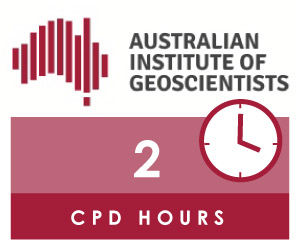Part II. Continued Professional Development is expensive. Right?
Wrong. Continued pprofessional development (CPD) covers a broad spectrum of activities that contribute to both your development of new skills and refinement of existing ones. CPD always requires an investment of time but it does not need to be expensive or onerous in other ways.
CPD can be considered to be an investment, by you in your own career, and in your development as a professional by your employer. It can be both formal and informal and requires tracking and documenting the skills, knowledge and experience that you gain as you work, beyond any initial training. CPD records document what you experience, learn and then apply.
Some professions use the term ‘continuing professional develment‘ formally, and require a certain amount of development activity to be carried out and documented each year as a condition of maintaining your membership of, or registration with, a professional body, or a licence to operate in that field.
In other areas, CPD is used more informally. A commitment to learning and improving is, however, generally expected of anyone in a professional capacity.
There are no formal “licence to operate” provisions affecting geologists, generally, in Australia and New Zealand, although there are specific fields where government authorities require geoscientists to be members of a recognised professional association or institute. Requirements vary from state to state in Australia. The situation is very different in Canada, where professional registration is required to work in most provinces and legislation to mandate this is in place. Professional registration is also required in some U.S. states and in the European Union. AusIMM Members must have Chartered Professional status to act as Qualified Persons reporting exploration results, mineral resources and ore reserves to Canadian securities exchanges. This is not, however, required of AusIMM Fellows, or both AIG Members and Fellows. These arrangements are set in Canada and subject to regular review.
What is a profession?
A profession may be considered to be any career area for which you need a professional qualification. Traditionally, the professions included law, medicine (including dentistry and other allied professions), and accountancy. More recently, many other professions have emerged, including HR, marketing, sales and IT, all of which have recognised professional qualifications.
While CPD isn’t a requirement for geoscientists in Australia, it does demonstrate commitment to continually improving your skills, in addition to maintaining concepts of best practice through sharing learning with colleagues and peers.
Recording your development actions is essential. An important part of continuing professional development is being able to demonstrate it. It is important to keep a diary of all your development activities to be able to show how your skills and knowledge have developed over a period.

AIG organised and endorsed activities have specified CPD hours. You will have seen these logos in the AIG web site events calendar and email newsletters.
An investment in CPD is typically measured in CPD hours or CPD points, both of which are a combination of the time devoted to continued professional development and an activity weighting or multiplier. Multipliers reflect the effort and value associated with specific activities.
The AIG’s Registered Professional Geosceintist (RPGeo) programme specifies the following weightings for various CPD activities. Some examples of the weightings for different activities include:
| Activity | Weighting |
| Meeting, seminar and conference attendance, including webinars. | 1 |
| Formal postgraduate study, short course and workshop attendance (applied to lecture hours) | 2 |
| Distance learning – higher degree and postgraduate studies (applied to lecture hours) | 2 |
| “On the job” learning: e.g. mine visits (other than those associated with regular duties), working with consultants, undertaking company-sponsored research. | 1 |
| Preparation and presentation of materials for geoscience courses, conferences, seminars and symposia. | 2 |
| Participation in AIG and other professional society / institute committee work | 0.5 |
| Receiving mentoring (mentee) from experienced MAIG or FAIG | 1 |
| Providing mentoring to an early career or less experienced geoscientist | 0.5 |
Some activities are subject to additional restrictions, such as the proportion of total hours that may be provided by a single activity, to ensure that continued professional development completed by members has an element of diversity. There are also specified hours for some activities, such as 30 hours for publication of a paper in a peer-reviewed journal. A more detailed discussion of what constitutes CPD and relevant weightings is available here.
It’s not all about attending conferences and seminars. It is clear from the list above that there are a wide range of activities that contribute to professional development, readily accessible by all members. RPGeos are required to complete an average of 50 CPD hours per year, averaged over three years, which may sound onerous but is something that many members achieve without realising it, or doing anything out of the ordinary.
The key is ensuring that CPD activities are recorded.
What do you think? Is a requirement for all Graduates, Members and Fellows to undertake CPD, and in the process satisfying community expectations of what constitutes a professional, something that AIG should consider? Add your thoughts to this post or join the discussion on the AIG Linkedin Group.
Part I of this article series is available here.